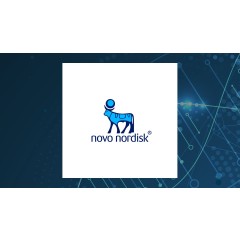In a transformative shift for technology startups, artificial intelligence (AI) has become increasingly accessible, enabling new businesses to develop sophisticated applications without the need for substantial financial investment. According to a recent survey, 87% of startups now view AI as essential to their growth strategies, while 73% express concerns about implementation costs. The good news is that innovative solutions allow these companies to leverage AI effectively, ensuring they can compete with larger, established firms.
Revolutionizing Accessibility to AI
The landscape of AI has evolved dramatically, eliminating the necessity for extensive resources traditionally associated with its development. Startups can now utilize powerful application programming interfaces (APIs) provided by industry giants like OpenAI, Google, and Amazon, which handle complex tasks such as natural language processing and image recognition at minimal costs. For instance, the cost for advanced language processing can be as low as $0.002 per 1,000 tokens, allowing even cash-strapped startups to implement cutting-edge features without extensive budgets.
Moreover, platforms like Bubble and Zapier empower non-technical founders to incorporate AI functionalities without needing to hire costly specialists. Free tools such as TensorFlow, PyTorch, and Hugging Face provide libraries that would have previously required millions to develop, making sophisticated AI capabilities available to all.
Strategic Implementation for Maximum Impact
Startups are encouraged to adopt a phased approach to AI integration. Beginning with one AI feature that aligns closely with their core value proposition can yield immediate benefits. For example, a food delivery application might implement recommendation algorithms before expanding into chatbots or route optimization. This strategy allows startups to validate their market fit while controlling development costs, as demonstrated by a chatbot company that initially operated with a budget under $10,000.
Utilizing free tiers offered by various AI services can further enhance cost-effectiveness. Companies like Google Cloud offer $300 in credits for new users, while AWS and Microsoft Azure provide free access for limited periods. By planning development timelines to take advantage of these offers, startups can build prototypes without incurring immediate costs.
Incorporating a hybrid approach, combining free open-source tools with premium APIs, can optimize resource allocation. For example, Grammarly initially used open-source natural language processing for development before transitioning to custom solutions as their user base grew. This strategic blend of resources can lead to substantial savings.
Real-World Examples of Cost-Effective AI Applications
Several successful startups exemplify this trend. Notion effectively integrated AI-driven content suggestions and automated formatting using a mix of open-source tools and selective API usage, maintaining costs under $5,000 monthly while catering to millions of users. Jasper, previously known as Jarvis, built its initial minimum viable product using OpenAI’s API with a focus on optimizing usage to keep expenses below $2,000 monthly.
Otter.ai combined Google’s Speech-to-Text API with customized algorithms, achieving a cost reduction of 70% compared to in-house development while delivering high accuracy in meeting transcriptions.
Startups should consider a structured approach to AI development over distinct phases. In the first phase, focusing on identifying high-impact use cases and building basic prototypes can set the foundation for success. The second phase involves optimizing performance through caching and A/B testing, while the final phase encourages negotiation for volume discounts and planning for potential international expansion.
With an estimated 15-20% of the development budget allocated for AI services, startups can explore innovative solutions while managing their costs effectively. Observing usage patterns reveals that often, 80% of AI expenses stem from just 20% of use cases, indicating opportunities for optimization.
AI is no longer the exclusive domain of technology giants. As the landscape continues to evolve, startups can harness AI’s capabilities to build intelligent applications that meet user demands and compete effectively, all while adhering to sensible budgets. The focus should remain on smart implementation, prioritizing features that enhance user experience and iterating based on genuine feedback. In a competitive marketplace, agility and strategic planning can provide startups with the edge they need to thrive.
































































